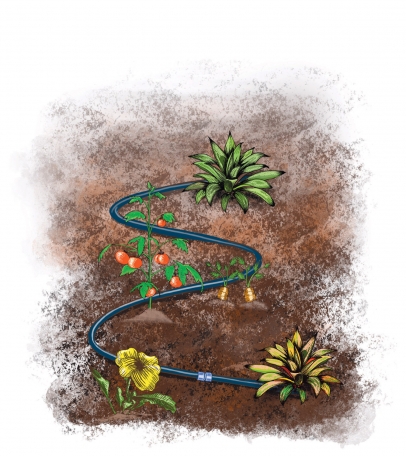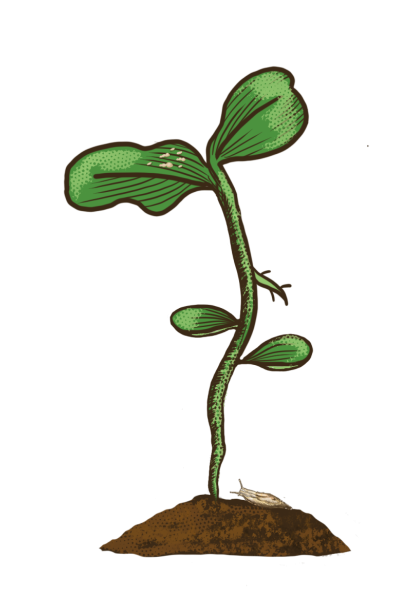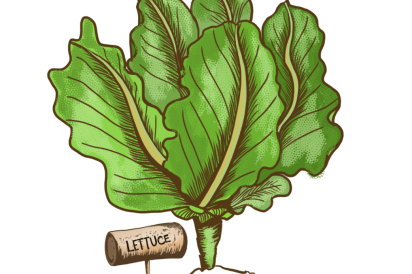Good to Grow
Gardening Hacks for Spring
If you’ve ever attempted gardening, you know how rewarding—and how challenging—it can be. You might enjoy an overabundance of lemon cucumbers while the butter lettuce is ravaged by pests before you can even harvest it. Gardening always involves some trial and error, but a few local experts offered their insights into common gardening myths and useful tips to help you make the most of this spring season.
TIP “Under/overwatering is always a beginner mistake,” says master gardener Joe Santos. “Whether in containers or in the ground, checking for moisture is easy enough. Use your finger (or a pencil) to poke into the soil. If moist at the root level, you’re good.” Water at ground level, with soaker hoses or drip irrigation if possible. Not only will it conserve water but it reduces soilborne diseases that spread from splashing.
Myth: Watering during the hot summer will damage your plants. While it’s often ideal to water earlier in the day, don’t let your plants get scorched by the midday sun if they’re in need of watering.
Gardening doesn’t have to be expensive. You only need a few tools to get going. Some easy recycling hacks can also help. “Seedlings are prone to attack in early spring,” Santos says. “Row covers made from lightweight material or fashioned from milk jugs or plastic bottles work well to give them a head start.”
Myth: Companion planting works wonders for backyard vegetables. Though companion planting is oft-cited gardening wisdom, it won’t solve all your gardening issues. “Often these plant companions are discussed as science, but are mostly just anecdotal,” says sustainable food systems advisor Rachel Surls. “There is science around some interplanting of different crops, but it’s not as simple as the companion planting myth makes it out to be.” A little online research can help you determine the optimal layout for your plants.
TIP Set your seeds and plants up for success: Add compost to your soil to make sure it has all of the necessary nutrients, and don’t forget to add a mulch layer on top—straw or shredded leaves—to shade out weeds and reduce water evaporation.
Myth: Native and non-native edible plants don’t mix. Antonio Sanchez, nursery manager for Rancho Sierra Vista (Santa Monica Mountains National Recreation Area) was quick to bust this myth. “The trick is to find adaptable native plants that don’t mind some of the extra water the non-native edibles will receive,” says Sanchez, “and that can handle the extra nutrition and extra clay and loam found in most food gardens.” His recommendations include combinations like yarrow, hummingbird sage, elderberry, wild grape and toyons—all edible!
TIP Use an online sunlight calculator like SunCalc.org (or jot down your own observations) to see how the sun falls on your gardening area during various times of the day so you can plan where to plant your seeds to ensure they’ll get enough light and warmth.
Myth: Spring and summer is best time to plant all plants. In fact, the best time to plant local natives and many Mediterranean-type plants is anywhere from late fall to early spring. Cooler weather allows plants to establish strong root systems, mirroring the way that native plants grow around Ventura County’s hills. By the time the summer sun and warm weather hits, the plants will be bursting with new growth.
Gardening is a great activity for kids, and has even been shown to help inspire them to eat their veggies. “Choose something that germinates quickly to keep their interest,” says Rose Hayden-Smith, local author of Victory Gardens and Emeritus of UC Agriculture and Natural Resources. Sunflower seeds are an easy and fun option.
TIP While starting seeds indoors might be tempting, oftentimes these seedlings develop thin stems due to lack of sufficient light. Once transplanted or set outside, garden bugs will make quick work of their weak stems.
Tips and Tricks from the Field
Put coffee filters (used are fine!) in the bottom of your pots to prevent soil slipping out when you water.
Add a little mineral oil to a pot filled with sand to store your clippers, trowel and other metal garden tools. They’ll stay sharp and won’t rust in the mix.
Lots of annual vegetables can be grown in spare buckets or even cardboard boxes, which can help you save money on building raised beds. Potatoes, tomatoes and herbs are all great options, just be sure to drill holes in the bottom for drainage! (Note: the boxes will eventually become compost, so they aren’t a long-term container.)
If you drink wine, use your leftover corks as markers by writing the seed variety with a Sharpie and sticking them on the end of a wood kabob skewer.
A little bit of cheap beer in a jar lid at the base of your plant will prevent slugs from chomping on the leaves.
You can regrow many vegetables from your kitchen scraps. Celery is a great choice to start with—take the leftover bit of stalk, put it under a glass or plastic cover in water and transplant once it starts sprouting leaves.
Start your sprouts on a kitchen sponge, keeping it consistently damp (not wet) by misting daily (and covering at night in low humidity). No soil required!
Feeling inspired? Shop for quality seed at any of our local garden stores (Plant Good Seeds offers organic varieties, many cultivated at their farm in Ojai) or buy new starts at farmers’ markets and enjoy the spring sunshine.











